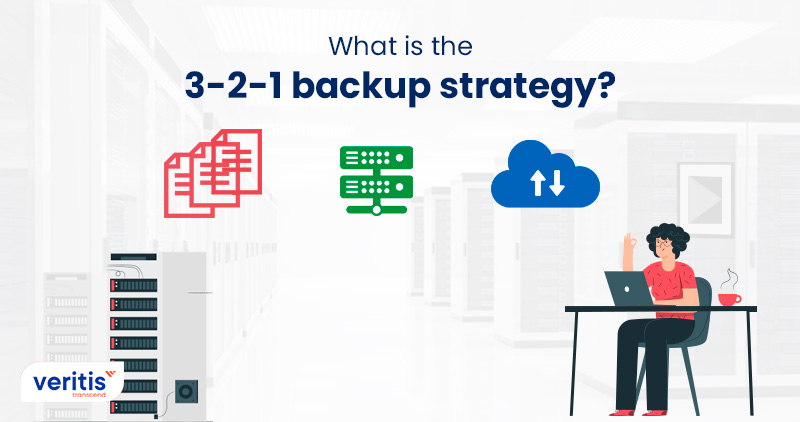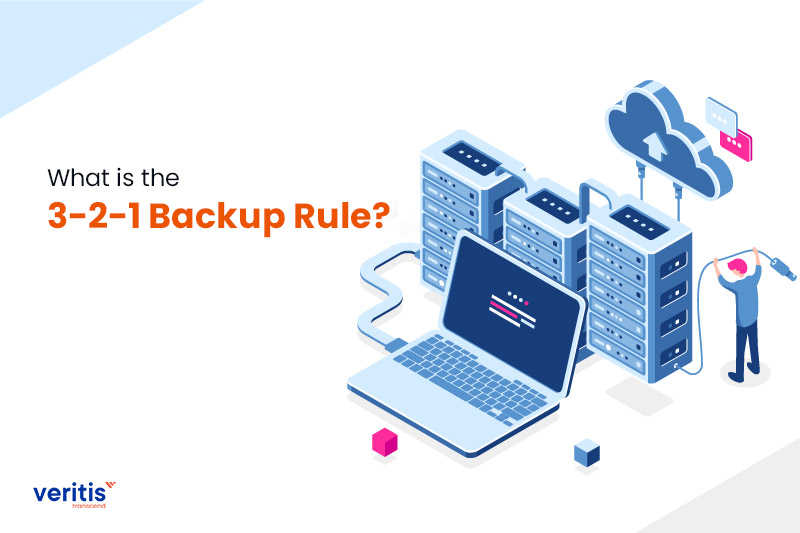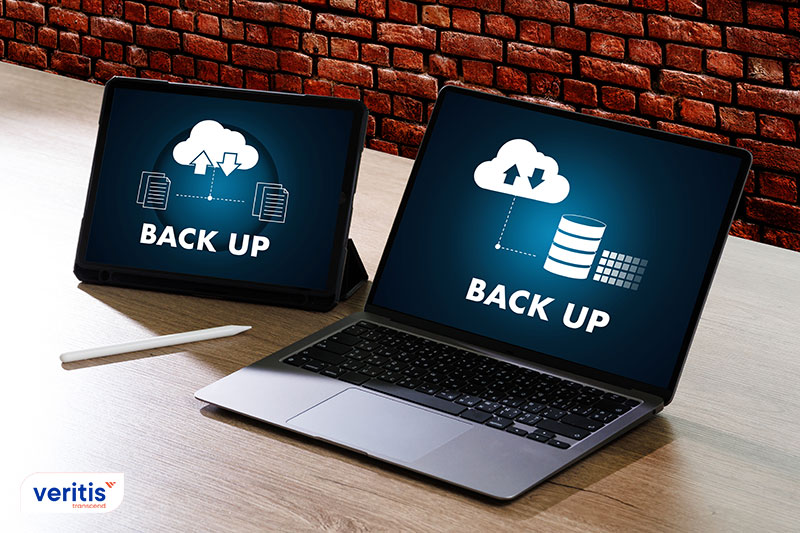
No business owner likes to receive a hard drive disk failure notification when turning on a desktop or a laptop. A natural disaster that renders on-site devices unusable is disastrous, but ransomware is one of the most significant risks to data accessibility.
Thankfully, the 3-2-1 backup rule, along with a recovery plan, aids businesses in getting back up and running. The 3-2-1 backup and disaster recovery strategy and best practices for shielding your company from data loss are covered below.
It’s not like buying comprehensive vehicle insurance, which you hope you never need but are pleased you have when you do. Backing up your computer files isn’t like that. Of course, you want to protect your sensitive data against malware, drink spills, hard drive crashes, unintentional deletions, and other potential threats to your personal information, images, and business files.
A dependable recovery process for guaranteeing that data is appropriately safeguarded and backup copies of the data are available when needed is the 3-2-1 backup strategy. The three copies of the data to be safeguarded are saved on two distinct types of storage media, and one copy of the data is transported offsite. This is the main idea behind the 3-2-1 backup solutions.
The crucial data of the firm is copied by backup software in the traditional 3-2-1 backup rule and saved to a different on-site storage device. Then, two more copies of the data are stored in two additional devices, one of which was usually a tape library, either during or right after that procedure. Because tape made it simple to generate a portable copy of the data in the form of a tape cartridge that could be delivered offsite, the tape was a standard component of the process.
Although the 3-2-1 backup strategy has been around since the beginning of data protection, most backup software and hardware companies still view it as a best practice for using their products. They understand that the fundamental idea still holds regardless of how or where a corporation stores its data, even though new specifications and data have made the 3-2-1 backup rule a little more challenging.
Required Backup Strategy! Schedule A Call
Reasons to opt for the 3-2-1 Backup Rule?
The foundation of every business interaction is data. Every piece of hardware and software you use to operate your business retains data, including attachments like scanned receipts and metadata like software access permissions. Data loss can happen for numerous causes, including human error and data breaches.
Data loss can interrupt corporate activities, leading to downtime and missed opportunities regardless of the reason. It’s possible that you can’t access customer, financial, or mission-critical data. As a result, your company’s reputation and client connections can suffer.
What is the 3-2-1 Backup Rule?

Multiple copies of the data are stored using the 3-2-1 backup rule on various storage media and locations. It’s recommended to store backups of vital data from tablets, desktops, and cell phones while backing up your data.
American photographer Peter Krogh invented the 3-2-1 backup rule. This was a significant innovation for the photography industry that has broad consequences for other technological fields and is still relevant today. Although this rule is adaptable and timeless, Peter provided the following remark about the 3-2-1 backup strategy as to how it fares in the current times:
“While my focus has been primarily on digital media, the 3-2-1 (backup strategy) principles are pretty universal. In fact, the “rule” itself was simply a synopsis of the practices that I found among IT professionals as I was writing my first book. I just gave it a catchy name.
Over nearly 20 years, 3-2-1 (backup rule) has been a great tool to evaluate data risk exposure. It started in an era of 30GB hard drives and CD backups and has scaled nicely to a world of 18TB drives and ubiquitous cloud storage. With so much of our life and livelihood stored in digital form, and with the threats of malware increasing, it’s essential for everyone to have a framework for assessing vulnerabilities.”
Useful link: Disaster Recovery’s Strategic Approach to Organizational Growth
Rules of 3-2-1 Backup Strategy
First, using the 3-2-1 backup strategy requires that you maintain a minimum of three unique copies of your data at all times. The production data, or the original data you utilize in the real world, is one copy. Backup copies are the other two copies. The production copy of the data and the two backup copies should all be stored and configured to ensure their integrity, even if the other copies fail or vanish.
Finally, the data should be identical in each of these copies. In other words, you don’t meet this requirement if you have one copy of data from a backup you made yesterday and two additional copies you made last week. Comparable data from the same time point must be presented in every copy.
Significance of 3-2-1 Backup Rule

The 3-2-1 backup strategy is acknowledged by information security experts and government bodies as a standard practice. Although it cannot guarantee that no data will ever be compromised, this backup solution reduces risk to the greatest extent possible.
Using the 3-2-1 backup rule is crucial to ensure that data doesn’t have a single point of failure. As a result, an organization is protected if one copy is corrupted or technology fails and if a natural disaster or theft destroys the physical storage types.
The 3-2-1 backup strategy ought to be used as a starting point. However, many organizations demand that managed data be stored in more than three copies. For example, some people might divide the data among a production set, a backup set (perhaps utilizing an alternate media), and a disaster recovery set (potentially offsite). The 3-2-1 rule is a terrific place to start, but others may have more particular needs.
The ability to run certain data analytics operations on the data copies (the data stored in backup or disaster recovery infrastructure) rather than on the original data is another advantage of applying the 3-2-1 strategy. Another advantage of this rule, in addition to its seeming simplicity, is its customization flexibility.
The 3-2-1 rule allows for a wide variety of backups within an organization’s decided strategy, taking planned media types, locations, etc., and fine-tuning the number of backups. When choosing backup setups, various factors can and should be considered.
Useful link: Cloud Disaster Recovery Services
3-2-1 Backup Strategy Variations

A practical 3-2-1 backup rule may be implemented in multiple ways. The specifics of each approach will primarily rely on the volume of data that has to be safeguarded, the installed storage devices, and the kind of offsite repository accessible. There are several ways to complete the first stage of creating the three copies of the backup recovery.
The most straightforward approach would be for the backup program to produce the “master” backup solutions, after which it or a replication tool would produce two more copies, one of which would be stored on a different type of media. The first two copies might also be made concurrently via mirroring, with the third copy being spun out from one of the original two.
However, producing the final copy is frequently the last stage in the process since one copy must exist on a different medium, and copying to a new media type is likely to happen at a different rate than making the first two disk- or solid-state drive-based copies.
Companies should store the second duplicate on a different server or storage system from the original equipment if it is kept in-house for speedy or operational recoveries. In case it is required, such as if the original data is lost or destroyed, the target gear for the second copy should make it simple to obtain the backup solutions. Recovery efforts should be facilitated by storing copy number two on hardware comparable to the original system.
The internal copy can be kept on a different or related media. For example, a company could create the initial “master” copy before copying the data to two tape drives concurrently or sequentially. The offsite location would get one tape cartridge while keeping the other. The disadvantage of this method is that it can take some time to retrieve data from the local tape; it will undoubtedly take longer than doing it from a hard drive or solid-state drive. This would still hold even if different removable media, such as optical disks or detachable drives, were employed, albeit recovery times would vary.
The “1” copy of the data has to travel offsite, and in the classic 3-2-1 backup strategy, this was usually done by transferring the backup to an offsite location. Typically, a business would outsource the execution and storage of this enterprise backup strategy.
Sending it to a cloud service introduces a twist to the 3-2-1 backup strategy if the offsite copy also serves as the second media type copy (the “2” in 3-2-1). This is because the cloud service will likely store the copy on the same kind of media used internally. This merits some thought, but as cloud storage is frequently viewed more as a storage medium than an additional storage site, it might not be a problem.
Useful link: Cloud-Based Disaster Recovery Plan
Conclusion
The 3-2-1 backup rule is a decent general guideline to follow regardless of the size of your business or the amount of data you need to backup. It increases the dependability of your data backups and shields them against most disasters, such as ransomware attacks and natural calamities.
Ensure the backup solutions you chose are compatible with all the services and locations for data storage that you might need to employ to comply with the 3-2-1 backup rule. Choose a system that enables low-cost cloud storage tiers to maximize the effectiveness of your backup plan while minimizing expenses and ensuring high data dependability. Reach out to Stevie Award winner Veritis to arrive at a definitive 3-2-1 backup strategy.
Got Questions? Schedule A Call
Additional Resources:
- What is Cloud Migration? Strategy, Process, and Tools
- Cloud Adoption Strategy: Which Approach Would be Most Effective for Your Company?
- What are the Different Types of Cloud Computing Services?
- How Does Cloud Computing Help Fintech?
- What is Cloud Security Posture Management?
- Cloud Computing: Trends, Challenges and Benefits
- What is Cloud Computing Security?